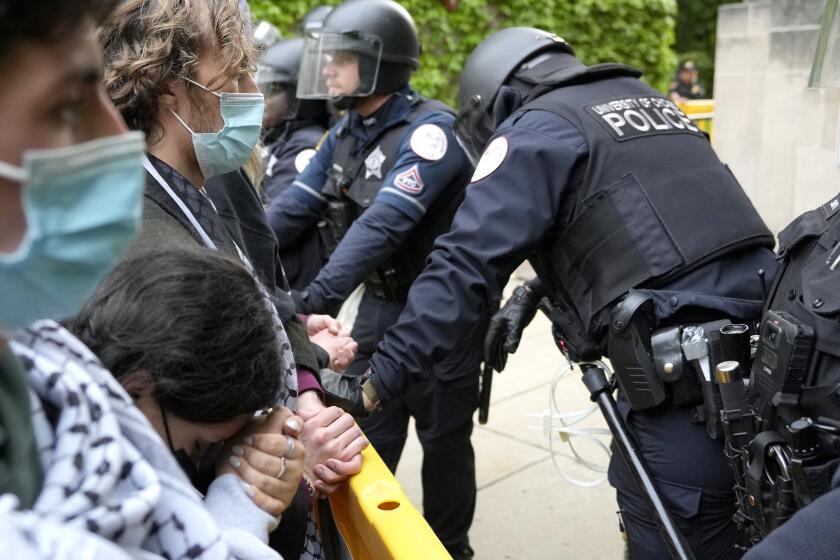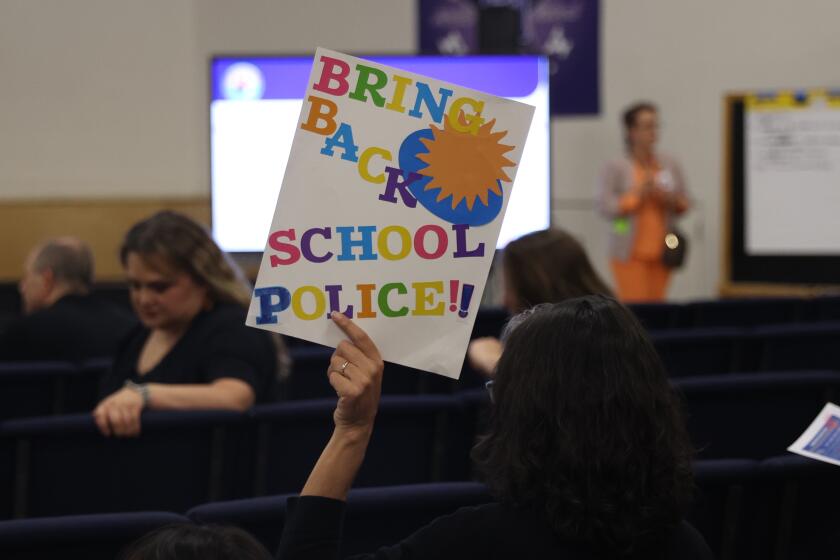Voucher Loss Can Lead to Real Reform : Valley residents do not harangue the Los Angeles school district because they want to escape to private schools. They just want public schools to be better.
“I have never let my schooling interfere with my education,” Mark Twain once said. Both sides in the school voucher debate and the media might want to take his advice.
The questions I received from reporters after the election were all couched in shock that Proposition 174 didn’t win in the San Fernando Valley. There was equal shock that Proposition 170 lost. The media shouldn’t have been surprised.
Put aside that the pro-174 campaign was inadequately funded and dismally run. Put aside that the anti-174 campaign outspent the proponents 8 to 1, primarily through teachers’ union contributions. Put aside that the educational Establishment has outlasted two generations of parents in its opposition to meaningful reform.
The simple fact is that Proposition 174, as presented, was an idea too radical to be embraced by a majority of voters in the San Fernando Valley.
We are, after all, the quintessential middle-class community. Most of the Valley’s voters attended public schools. We aren’t from a generations-long list of prep school graduates. And, I don’t think, even if the pro-174 side had had the best-run campaign, that the general public is ready to vote for tax payments to religious schools.
*
At the same time, Proposition 170 lost, in my opinion, because voters said they did not want to spend any more property taxes to get improvement from schools. The requirement for a two-thirds majority to pass a school bond issue remains law. The failures of dozens of such issues in the past 15 years will undoubtedly be repeated until schools show the voters that they’re wisely and effectively spending the money they already receive. The twin defeats are, in my opinion, two sides of the same coin.
Valley residents do not constantly harangue the Los Angeles school district because they want to escape to private schools. They want public schools to be better. They want them to be like the public schools they attended.
Look at the mess California schools are in today. Then let’s look at what it might take to pass meaningful reform.
Taking inflation into account, we are spending twice as much per pupil as we were 20 years ago. Are we getting better or even the same value for our investment? Of course not. California has one of the lowest high school graduation rates and highest dropout rates of any state.
Compare California and Utah, which have the nation’s highest class sizes (see box). We spend far more money to graduate far fewer pupils per capita.
Not so long ago, 40% of Californians buying houses did so because of the schools nearby. The LAUSD’s 15-year obsession with social rather than educational issues means the school near a family’s home may not be the one its children attend. Even if it is, massive problems remain.
*
Busing and other social programs combined with a real estate market that has imprisoned many homeowners in their current houses have produced the makings of a revolt within the public system. Yet this does not make for a wholesale exodus to private schools.
In 1978, when forced busing started in the Valley, few new private schools blossomed. Parents moved out of the city to find neighborhood schools.
There is widespread dissatisfaction with public schools across the country. Yet the percentage of U.S. students in private schools today is less than what it was in 1955--11% compared with 13%. In Los Angeles County, private-school enrollment has dropped in the past decade from 15% to 13% of total enrollment.
So what will it take to get something passed that will shake up the educational Establishment? At least four things:
* Parents have the choice to send their children to any public school for which they qualify.
* The Valley and other areas of the state must be able to secede from school districts which don’t meet students’ needs. This could be done by school board action or elections. The idea has precedent. Palos Verdes and Compton have removed their schools from the LAUSD.
* The limit on the number of state “charter” schools must be eliminated. If parents, teachers and administrators of a school want this independent status, they should have it.
* The architects of any new initiative must pit factions of the education Establishment against one another. It must be divided before it can be conquered. Union teachers in particular should be wooed to the pro-voucher side. Perhaps a voucher plan could include a formula for giving bonuses to good teachers. Rank-and-file teachers must think twice about being assessed for a campaign against school reform.
*
Whatever the next step for voucher proponents is, it’s got to include the concept of improving the public schools. The majority of Valley voters are clearly not willing to forsake the institution that provided them with their education.
Educational reformers should take heart. Property tax reform was on the ballot for 10 years before it finally passed. Even the educational Establishment says it’s received a “wake-up call” with Proposition 174. History teaches that it will not wake up enough to satisfy the voters. Therefore, a renewed effort at the ballot box will probably be forthcoming. Eventually it will be successful, and San Fernando Valley voters, as they were in the battle for tax reform, will be the focal point.
A Tale of Two States
California Utah Average class size 22.8 25.0 Expenditure per pupil $4,391 $2,730 Average teacher’s pay (1990) $39,598 $25,578 Percent graduating (rank) 68 (42) 83 (10)
Sources: National Center for Education Statistics, U. S. Department of Education, National Education Assn.
More to Read
Start your day right
Sign up for Essential California for news, features and recommendations from the L.A. Times and beyond in your inbox six days a week.
You may occasionally receive promotional content from the Los Angeles Times.






